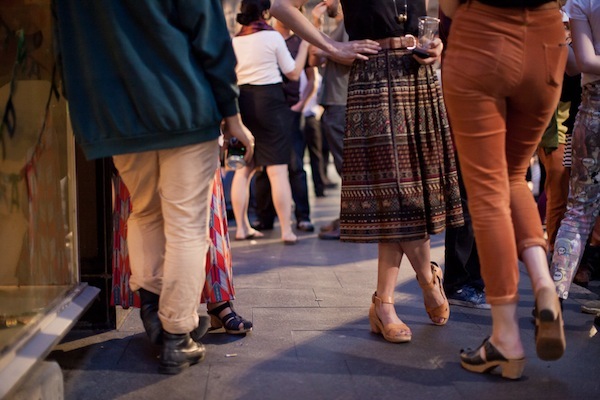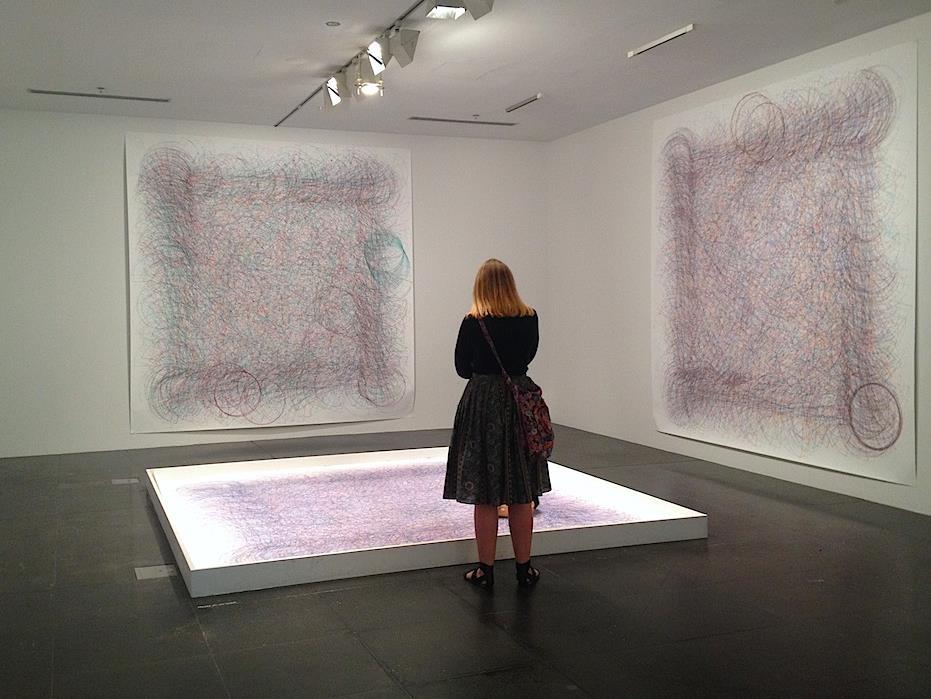Photo ArtsHub; National Gallery of Victoria, 2015
Walking into a gallery and trying to decide what to buy can be daunting and an auction room can be even more confusing with its pace and premiums. So how do you break down those barriers and become part of this collecting world?
The simple answer is to ask questions. The myth that the art world is an unapproachable club, is belied by the truth that dealers are passionate about their work and enjoy sharing their knowledge. After all, they are in the business for a reason.
Far from being beholden solely to a handful of deep-pocketed collectors, galleries and auction houses are always looking for new and emerging collectors.
Here are a few tips for getting started.
1. Don’t just buy art as an investment
While we are all keen that those hard earned dollars continue to reward, the unpleasant truth of all investment is that it is unreliable. The secondary art market fluctuates – as do tastes and trends – and not all artworks escalate in value. Add to that the emotional content of art and – although collecting is encouraged – speculation is not regarded well in the art world.
The first piece of advice any gallerist, auction dealer or artist will give you is to buy what you like. You want to be able to grow with this thing that sits on your wall or an object that adds curiosity to your space. It is you who will flourish through an engagement with art – not your bank balance.
While financial considerations should not drive your choices, they should influence how you manage your collection. Your investment can be maximised through keeping good records. Start a folder on your collection with all your purchase receipts, provenance details, condition reports and so on. This is where the value lies if you are to resell your work at any point in the future.
Read: How is a work of art valued?

Photo Gina Fairley ArtsHub; Hong Kong art fair 2008
2. Build relationships with galleries
Gallerists are there for you. The reason they are in this business is from their own passion for the artworks they work with and, given that, they are happy to share knowledge and time in growing your own appreciation.
Choose just a couple of galleries that match your taste and start a conversation. Tell them that you are interested in building a collection – explain that you might have to start slowly but that your interest is sincere.
It is not possible to build a quality collection without building a relationship with galleries. The creation of a collection in tandem with a committed dealer will be a collaborative project that brings pleasure to you both.
If you are still feeling unsure of yourself, employ an art advisor. These are professionals dedicated to working with collectors.
Read: The Rise of the Art Advisor
3. Be curious – knowledge opens doors
If you are interested in starting a collection one of the best things you can do is to start collecting information first.
Look at the various galleries and the artists they show and identify what you like. Go to art fairs – they are a really good way to get a taste across a broad marketplace and to start on those relationships. When a work by an artist appeals, hit the internet and research their other work and career to date..
One thing a gallerist loves doing is talking about their artists. You will learn about the “unwritten” aspect of the artworks and the person behind them; when new work is coming out of the studio and possibly the opportunity to meet the artist.

Image Art Month Sydney
4. Be involved
A good way to continue to learn is join a patrons or friends group at one of the museums, or a private group such as Contemporaries. Attending education events, emerging collectors events and talks at art fairs will not only increase your knowledge but also give you valuable contacts and a sense of how the art world works.
Being in the scene opens doors – often to studios – and will give you that sense of connection to the artists who interest you. It will also expand your awareness of artists you did not know about.

Image CC pixabay.com
5. Don’t be afraid of auctions
Auctions can be a fantastic opportunity to buy secondary market art works at good prices. While there are top drawer and trophy artworks that make the news, most auctions send around a hundred lots to the hammer in any sale, and among them there are always good buys.
Look at the catalogues online, and if there is something you are interested in then go to the preview and ask about it. Auction house staff – like gallerists – have a wealth of knowledge and are there to help you.
When asked, they will also tell you if there is “interest” in the lot, how realistic they think the reserve is, what works have gone for in the past, is the provenance good, and so on. They will also arrange a condition report on an artwork or object if you require.
But remember if you are buying at auction do your sums first. Calculate what the buyer’s premium is and how much that will add to the hammer price and establish your limit. It is easy to get caught up in the excitement of the moment.
6. Make sense of your collection
Most emerging collectors start out buying artworks for a particular space – that infamous zone over the couch or bed. But while “collector decorating” – buying art to match your colour scheme or decor – has a bad name, it is often a very real starting point.
Decorating quickly changes into collecting when you become aware of the styles and media you like – whether you are drawn to minimalist work, natural materials or dramatic colour, for example.
The key is either to collect in clusters or keep your collection compatible. For example you might choose to focus on emerging Australian artists only, or black and white photography, or modernist works on paper, paintings to ceramics.
Think like a curator. If you were to pull your collection out of your house and put it in a white cube gallery, how would it look? What does it say about you?
And avoid shopping lists. Don’t limit yourself to a certain artist “you must have”, and don’t put your name on a gallery list for the “current hot thing” just because it is fashionable. You will be like a horse with blinkers running fast in only one direction.
Your art collection should be an extension of who you are and should reflect your personality.7. Don’t flip artworks
This goes hand-in-hand with speculative collectors. Flooding the market with an artist’s artwork, or pushing an artwork for a quick resale after you have purchased it, does the artist a disservice and erodes their stability in the marketplace – a reputation and position that has taken years to build.
Hold on to your collection. And if you are in a financial pickle and really need to sell up, then first approach the gallery you bought it from. The unwritten code is that the gallery is working in the artist’s best interest and will likely return the artwork to stock rather than see it plummet on the secondary market.
8. Yes – you can layby
Galleries are business and they want to close a sale so be open in discussing your situation. How much can you spend? Can they offer a discount? Can you pay it off?
Most galleries are happy to work out a payment schedule. And if you don’t want to wait for your artwork, today you have the option of Art Money which allows you to buy an artwork with payments over a ten month period.
It’s fine to come to a financial arrangement but respect the position of the gallerist. You are not haggling in a flea market.




